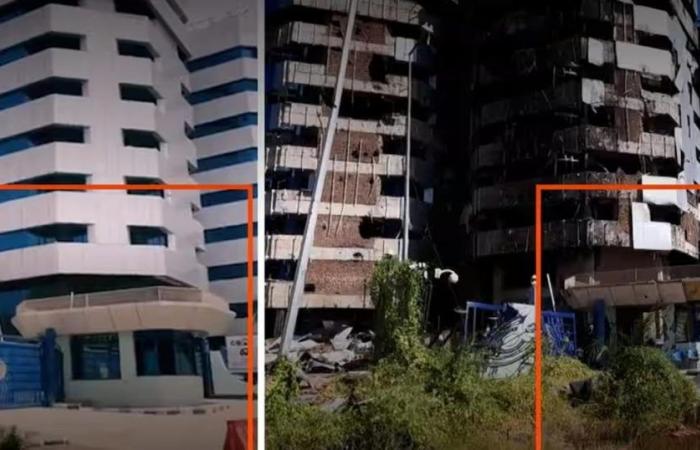In Khartoum, in 2025, the tracks of the international airport were strewn with plane carcasses and luggage carouses are open. The eighteen floors of the headquarters of the Grand Nile Oil Operating Company (GNPOC) are free, burnt down. Same thing at the Central Bank of Sudan, ripped off in the capital. The Republican Palace, the president’s residence, seems to be abandoned – nature has resumed its rights.
In this video broadcast on the YouTube channel of Guardian, Two years to the day after the start of the fighting in Khartoum between the Sudanese army and the paramilitaries of the rapid support forces (FSR), images of the most emblematic places in the Sudanese capital scroll. Each time, a comparison is made between the pre-war period and today, using photos and videos collected by the British newspaper, without comment or background. Useless, as the images speak for themselves. They testify, without detour, the extent of the destruction inflicted by two years of civil war in Sudan.
Cities transformed into battlefields
From April 15, 2023, start of the conflict, on March 25, 2025, at least 11,292 attacks were recorded, with an average of sixteen per day, according to a study by the ACLED association, cited by Al-Jazeera In an interactive format devoted to the second anniversary of the war.
According to this same study, the attacks were perpetrated at 50 % by the Sudanese army and 38 % by the paramilitary forces. These attacks include “Armed confrontations, air strikes and drone strikes, shells, artillery and missiles, acts of looting and vandalism, as well as the triggering of mines and explosive vessels”.
In a chronological article published on the same day, The Guardian draws up a fatal human assessment: this war “made tens of thousands of deaths and moved more than thirteen million people ”, and provoked “The worst humanitarian crisis never known”, Under the terms of the International Rescue Committee NGO.








